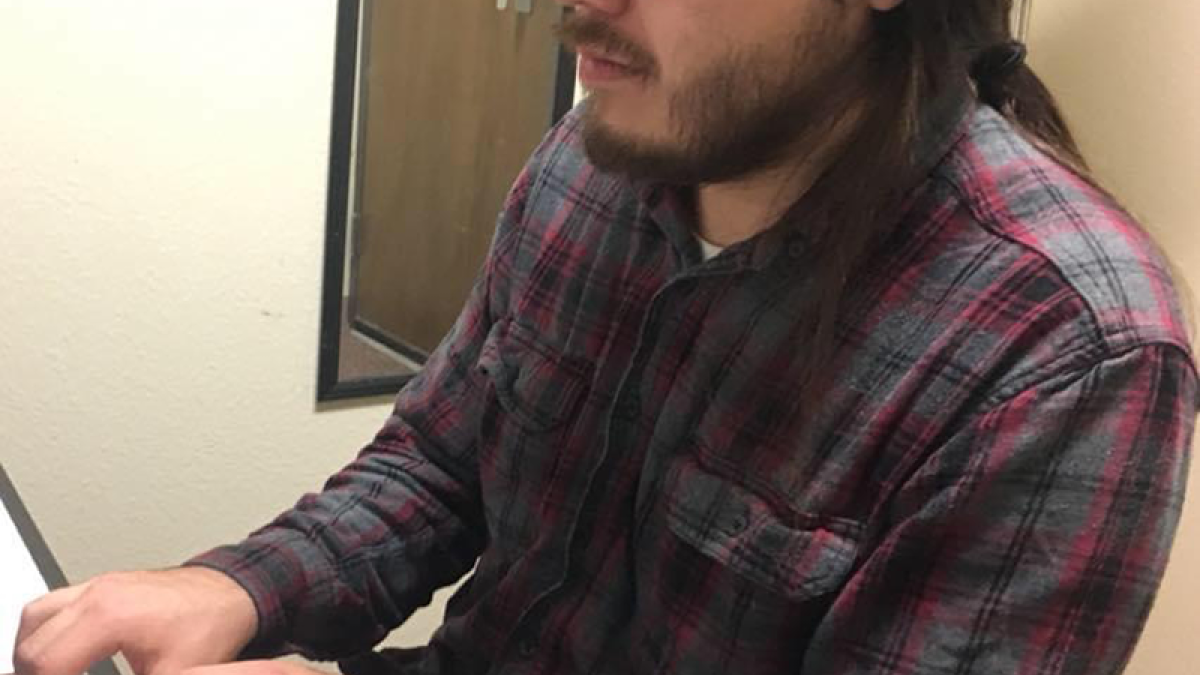ASU music learning and teaching graduate strives to connect classrooms, cultures

Editor’s note: This story is part of a series of profiles of notable fall 2022 graduates.
William Manuel, a member of the Salt River Pima-Maricopa Indian Community, will graduate with a Bachelor of Music in music learning and teaching from the Arizona State University School of Music, Dance and Theatre.
He not only acknowledges the land that ASU sits on but, at the same time, thinks about how he can support Indigenous learners in music and how music education can connect to Native youth and schools.
“In his classes with me, Will was outspoken about issues of equity and diversity, and championed the voices of all his classmates in group discussions,” said Sandra Stauffer, vice dean of the Herberger Institute for Design and the Arts and professor of music learning and teaching in the School of Music, Dance and Theatre.
Stauffer said that even in his student teaching, Manuel applied his ideals about equity in practice and made his lessons about supporting diverse learners and engaging with multiple cultures through music.
“Will measures his success by whom he includes in the music classroom,” she said.
Manuel said he wishes to bring something constructive back to his community and, in turn, strengthen the sovereignty of the nation.
“I wish to restore lost, broken or forgotten culture and bring that to the children and the future of the (Salt River Pima-Maricopa Indian Community) Nation – to connect cultures, not exclude or prioritize,” Manuel said.
In addition to his music teaching and learning courses, Manuel also studied piano under Robert Hamilton, professor of piano in the School of Music, Dance and Theatre, for the past two years and was a student in Hamilton’s piano studio.
“There are many words I could use to describe Will; 'enthusiastic determination' comes to mind first,” said Hamilton. “His work ethic and progress are in the top group of my class, something I have not seen in a non-performance piano major since I began university teaching in the 1960s. Also uncommon is the unusually strong originality and creativity of his work. He is a wonderful young person with great potential.”
Question: What was your “aha” moment, when you realized you wanted to study music education?
Answer: Dr. Christina Novak, ASU alumna and professor at (Scottsdale Community College), modeled the educator I want to be and also had a conversation with me that not only opened my mentality to opportunity, but also set me on the path of music education.
Q: What’s something you learned while at ASU — in the classroom or otherwise — that surprised you or changed your perspective?
A: How important it is to not only bring my culture and what I know to the classroom, but to also bring in multiple perspectives when dealing with a culture, as well as exposing the children to cultures other than their own
Q: Why did you choose ASU?
A: (Salt River Pima-Maricopa Indian Community) had a higher education program that supported me through my entire degree, and this scholarship had a preference for ASU. Also, the people I looked up to, many of them professors, all went through ASU to get their degree.
Q: Which professor taught you the most important lesson while at ASU?
A: Every professor I have had one-on-one time with has taught me something essential to not only my career but the path I chose to follow in my lifetime. They have all made pursuing achievements greater than what I could have imagined myself doing a possibility.
Q: What is the best piece of advice you would give to those still in school?
A: Be memorable, develop professional communication skills, turn in quality work, and make sure the professors you have respect for know your name. The network built through ASU will take you further than anything you could do independently. The ASU professors are key to creating greater futures for their students, and they will sometimes move mountains for their students when possible. And do not sweat the small, administrative stuff.
Q: What was your favorite spot on campus, whether for studying, meeting friends or just thinking about life?
A: The practice room — or nearby coffee shops that had free refills on tea.
Q: What are your plans after graduation?
A: Substituting in Tempe District 3 and eventually teaching primary general music education for the Salt River Pima-Maricopa Indian Community.
Q: Did you receive any scholarships while at ASU, and if so, which ones? What did it mean to you to be able to receive this funding?
A: I received a tribal scholarship, the Pell Grant and a university grant each semester. This gave me the ability to pursue higher education, chase my dreams and personally grow in more ways than just academics. These scholarships gave me a life I find worth living.
Q: If someone gave you $40 million to solve one problem on our planet, what would you tackle?
A: Indigenous representation – in arts, sports, academics, the sciences and, most importantly, legislation. Not only for Native Americans but also for Indigenous peoples around the world.
More Arts, humanities and education

ASU professor's project helps students learn complex topics
One of Arizona State University’s top professors is using her signature research project to improve how college students learn…

Award-winning playwright shares her scriptwriting process with ASU students
Actions speak louder than words. That’s why award-winning playwright Y York is workshopping her latest play, "Becoming…

Exceeding great expectations in downtown Mesa
Anyone visiting downtown Mesa over the past couple of years has a lot to rave about: The bevy of restaurants, unique local shops…

